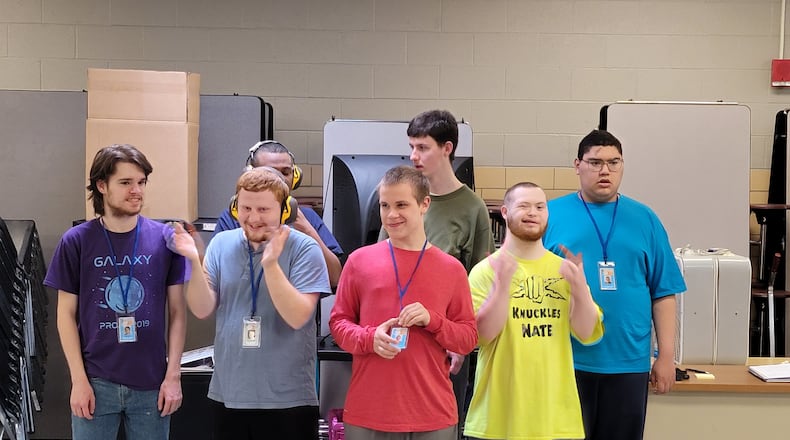“Students with disabilities and other barriers looking to build their employment skills while earning a paycheck can find meaningful work, gain valuable experience and be prepared to thrive outside of the classroom through this transition program,” said Michael Baker, transition coordinator of Bridging Abilities.
“Bridging Abilities is a great first step toward employment for students thinking about their futures after graduation. It is also a great supportive environment, not only for the students, but also their families who are beginning to navigate the path to employment with them. (The program) helps to bring students, parents, teachers, administrators and an employment provider together to build a bridge to successful employment after high school,” he added.
For the first year in 2021-22, TAC hired the students directly, employing 14 students from several schools including Greenon Local Schools, Kenton Ridge High School and the Montgomery County Educational Service Center/Learning Center North.
“Our students found a place to take small steps and experience great success through the Bridging Abilities program with valued hands-on, work-based opportunities,” said Tammy Stritenberger, curriculum supervisor for the Montgomery County Educational Service Center/Learning Center North.
This year, the program partnered with the Strategic Ohio Council for Higher Education (SOCHE), who hired participating students as part of their Miami Valley Intern Academy that provides high school students the opportunity to explore career paths through internships all while getting paid.
Students work on several light manufacturing projects including fabricating straps for the cargo nets TAC manufactures, and they work on kitting, packaging, labeling and sorting materials for various customers, Baker said. Students will also learn critical money management skills as they are paid bi-weekly to encourage them to set financial goals and budget for living expenses.
Some of the partners this year also include Learning Center North and the Clark County Educational Service Center, as well as two other schools who TAC worked with last year. TAC plans to add new schools to the program and begin implementing it during the 2022-23 academic year.
“We have had conversations with five other schools in the region to set the groundwork for the program and we hope we can begin work at those schools by the end of the 2022-23 school year,” Baker said. “By expanding the amount of schools Bridging Abilities is partnering with, the accessibility for students with disabilities to find adequate post-secondary preparation grows, which increases the likelihood of their success as valuable members of the workforce after graduation.”
High school educators in the Miami Valley interested in bringing the program to their school can contact Baker by calling 937-521-4708, emailing mbaker@tacind.com or visiting tacind.com. TAC is also encouraging businesses who have a need for light manufacturing work to be completed to contact TAC.
“In order to expand this program and serve more students, we are always in need of contract work for the students to do. We welcome the opportunity to speak with businesses about some of the traditionally labor-intensive, light manufacturing projects which could be performed by these interns,” Baker said.
About the Author

